Video Windows, Trojan Horses, Bozo Barricades, and Growing Up.
I understand that there is good evidence that the city of Troy existed and that there was such an event as the Trojan Wars. I gather the story of the Trojan Horse is a bit iffy as far as it being a reality, but the concept is real and we live in a world of Trojan Horses. Each of us also lives inside a mental city wall that shelters us from the outside world but we are constantly being seduced into dragging Trojan Horses inside our protective walls and then, at certain moments in time, circumstances will motivate the troops to spring out of one Horse or another and open some of the gates on our protective walls.
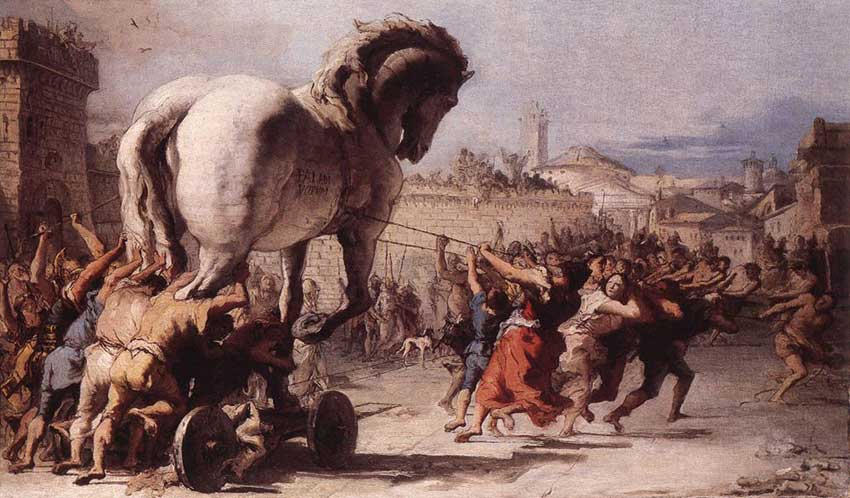
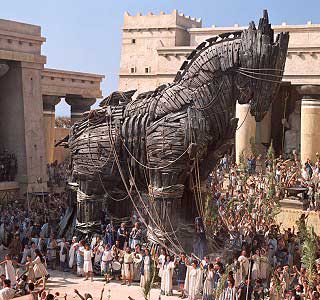
Visualizations of the Trojan Horse legend are varied and the day to day examples of the principle are equally unique.
The invisible mental walls are very real. They can yield a positive benefit. In some cases the walls can be seen as guarding the individual against morally foolish moves, suicidal thinking, or some forms of addiction. In some cases they might allow negative thought processes to thrive in the mental city. And in some cases they might cut the individual off from a view of reality that would transform the person’s thinking, dramatically, for the better.
I personally see the walls as being basically bad. Perhaps they seem to provide a type of limited protection, say against depression or suicide, but my argument is that anything that blinds us to the realities outside of ourselves, and detaches us from Life and from others, is ultimately negative.
Some might say I am complicating the simple act of “growing up” and experiencing life. But I feel that the Trojan Horse concept is valuable because in many cases we can clearly be fooled by thought structures that are truly Trojan Horses. Hopefully I will be able to illustrate my opinion. I think that the concept is central to life!
When we are suddenly exposed to the view outside our mental city walls, in some cases we are elated at what we find and in other cases we recoil and try to plug the gap in the wall. What is outside is Reality and really, it is all good. And eventually, I feel, our walls will be levelled and Reality will be shared by all. But the situation is complex and dragged out and fraught with friction and drama as it unfolds! The line from A to B is not a straight line!
There are situations as well where we confront Trojan Horse situations where the horse we dragged into our city discharges troops that actually build our walls even higher and stronger, cutting us off from Reality to an even greater extent. I would argue that the effect is temporary and ultimately positive. Life is complex and fascinating!
Let me tell you a personal story. It is about video windows, Trojan Horses, Bozo Barricades and growing up. Not only that, my story is arguably “another Trojan Horse”. If you drag it into your city, I think that at some point it may discharge troops that will open some of your barricades. Some people might eye the story and feel that it is a negative influence that is building your walls higher. Fascinating! We are all living life and jointly are in the exciting swirl of the experience.


LED or video windows or skylights, which show a view that gives the impression of outdoor reality, are a great analogy of the way we are able to view the world around us. We have the amazing capacity of being able to create our own, personal mental reality that can differ significantly from the environment that we are all immersed in. Personal "realities" can differ wildly despite all of us living and dying on the same globe.
Here is a scene from an LG prankvertisement where job applicants are fooled by a high definition "video window" into thinking the world is ending. The video window is so realistic that true reality is eclipsed by the video image. The human mind is capable of producing similar distortions.
Perhaps a more realistic way of viewing our circumstances is to consider video skylights or window panels that project images into a room that are not necessarily a view of what is outside. And to reflect the dynamic nature of our lives, let’s imagine that we are driving a car and that all of its windows are video screens. What is on the screens is a blend of outside reality mixed with distortions. It is possible for those distortions to be huge and for us to slam into a bridge abutment that we don’t realize we are aimed at – and of course – that seems to be the end of the experience. Predictable accidents, suicides, drug destruction, some types of health issues – all events might illustrate the point. We have a distorted view of Reality and boom - we hit a concrete object that could have been avoided!
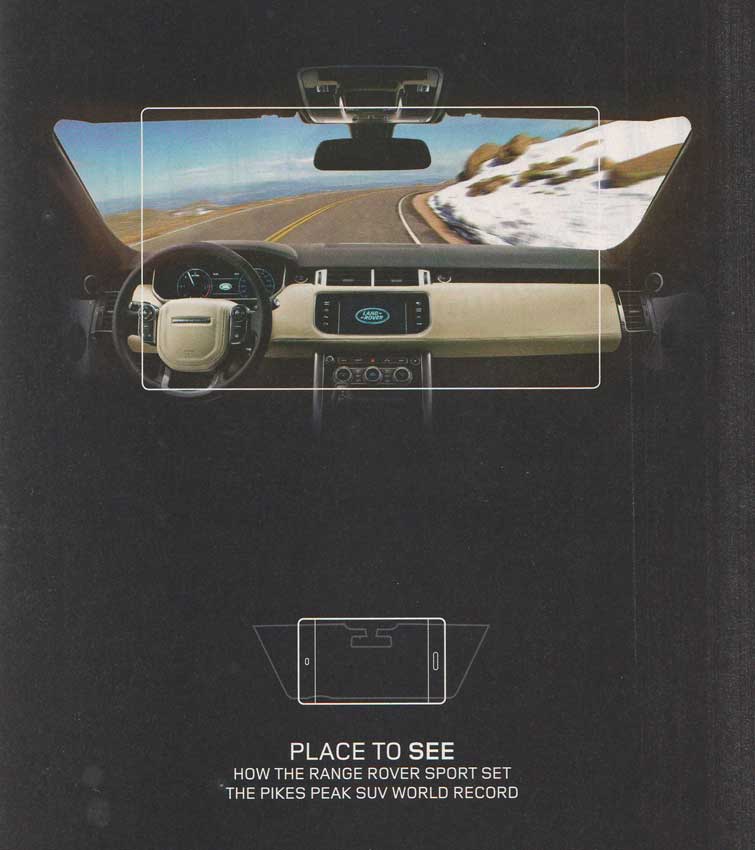
This Range Rover advertisement is a beautiful illustration of how we drive through lifel There is often a disconnect between our video windshield and what is actually out there. It isn't all bad. The capacity allows all sorts of creativity and adaptation. But the capacity also allows us to pull some amazing Bozo acts!
The distortions of reality are caused by upbringing and contacts, ignorance, bad information and influences, and by self generated distortions that we fabricate due to fear or greed or lust or envy or impatience – perhaps even out of ignorant idealism and due to seemingly positive character traits.
So I am contending that we drive through life, guiding our car via an artificial view. The distortions in the view vs reality are our city walls, which I like to refer to as Bozo barricades. We can all look back on views we have held that were out of touch with reality and as we grew and gained experience, we learned, understood reality better, and are now able to look back on our former state and marvel at how dumb we once were. Let’s face it. We all get smarter with experience and we can all see ourselves as playing the Bozo roll at earlier stages in our lives! Who desires to go back to the ignorance of childhood!
You know the details of your life, past and present. Your life is little different than mine. We all have our story. Here is part of mine. Anchor your story to mine and there will be great similarities. I am in a position to spout about my life better than I can about yours. Here are some of my observations from the trip. Here I go!
When you get older, it is fun and educational to think back to your past and think about the factors that made you what you are. When did you get onto certain pathways? What were important influences in your life? At a certain junction, why did you select the path that you chose rather than other potential paths? What would you do differently if you had the chance for a rerun? How have your views changed over time and why? When did certain events take place? How old were you at the time? When you were doing whatever, what other events were occurring that you only found out about long after? When you were the age of your children, what views did you hold? The more you research these matters the more you remember and it is a fascinating study. It tells you a lot about where you are now, and why! And it helps us to see how certain thought structures build and collapse in the face of outside realities.
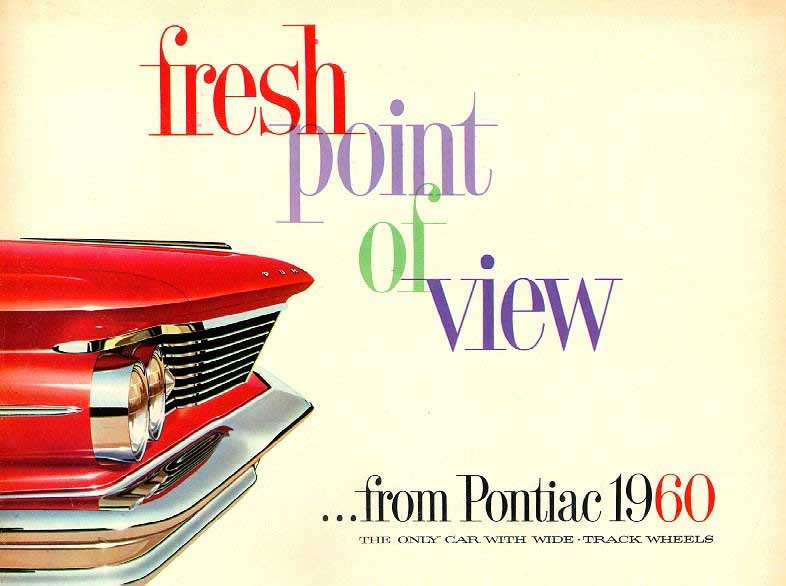
When I was young, not unlike many guys, I developed an interest in cars. I think the interest started about the time I was 11 yrs old because I can remember automotive events at that time, namely the look of the grill of the 1960 Pontiac car. I remember a Life Magazine “teaser” ad that only showed the grill, shortly before the car hit the showrooms. In 1961 a publication called Sportscar Graphic began, when I was 12. I was very aware of which drivers were competing for the Formula 1 driving championship in 1961. By that time I had a disdain for US cars and wished that North American car stylists would take a lesson from the Europeans.
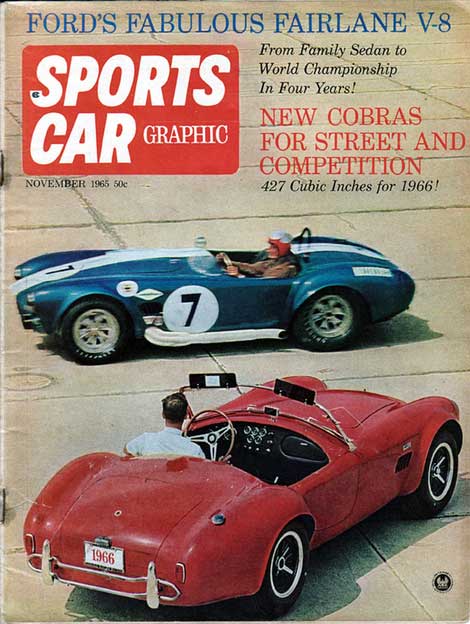
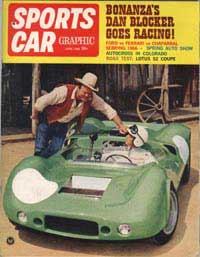
I eventually learned a lot about the 1958 Formula 1 racing contest but I know that I had no firsthand familiarity and I was unaware of the death of that year’s winner, Mike Hawthorn, until a few years later. Hawthorn was killed in a non racing car accident in 1959. Thus, at age 10, my interest in Formula 1 had not yet developed. I suspect that I was aware of the Indianapolis 500 as the names of several pre-1960 drivers are familiar to me.
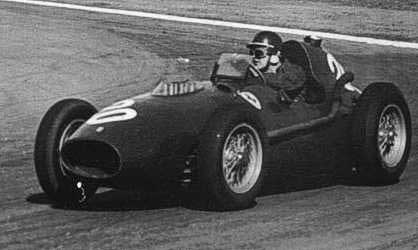
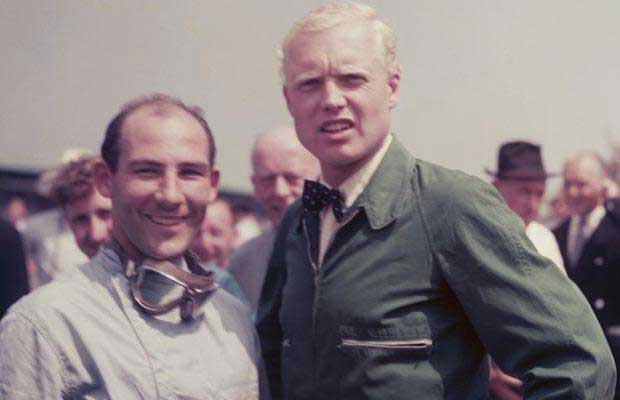
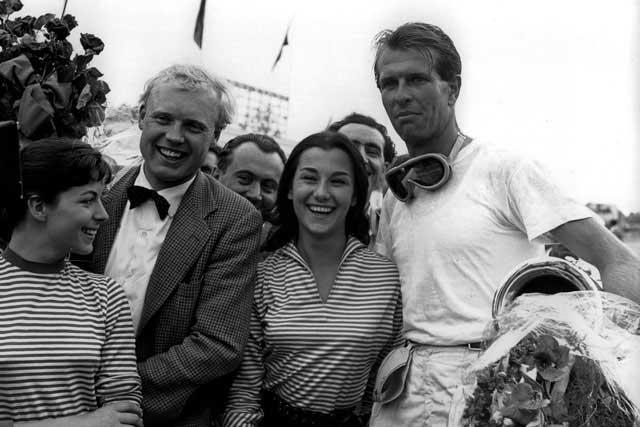
The marvels of the internet - I was able to dredge up the very advertisement that I vividly remembered from over 50 years ago.
Sports Car Graphic, for me, was educational as well as helping to create a personal dream world that was considerably out of touch with reality. But I was a kid and I was in learning and dreaming mode. Hey - we have all been there and likely still are!
Mike Hawthorn won the 1958 Formula 1 championship, edging out Stirling Moss by a point. Both drivers drove British Vanwall racers which had an engine based on the famous Norton Manx motorcycle engine. One of the designers involved with the 1958 Vanwall team was Colin Chapman who would go on to form the Lotus car company and help revolutionize Formula 1 design.
Hawthorn and Stirling Moss took the first and second spots in the 1958 Formula 1 battle. Moss, who is still alive as of this writing, was a great sportsman and due to standing up for Hawthorn in a technical dispute during the 1958 racing season, basically gave Hawthorn the championship win.
Mike Hawthorn and team mate Peter Collins in 1956. Collins was killed in a racing crash and Hawthorn died in 1959 in a "non racing" car accident. They both lived in the high paced Formula 1 world where life is a bit like a shooting star - bright, intense, and often short lived! There is reason to think that Hawthorn was killed due to street racing with a friend, when his Jaguar spun and hit a tree. The mental approach that helped him win on the track may well have been a cause of his "fluke" death.
Our small town had a stock car race track that my parents took me to several times but for some reason I never developed a strong interest in that local sport. Local heroes like Bubs Ball and Fearless Faye Belonge', a powder puff racer, are names that I will always remember, but my racing world was far from home. Perhaps I needed to be cradled in a dream world that was a bit more detached from immediate reality. I am unsure of, but suspicious of the dynamics. Dreams are often easier to handle than immediate reality and the work and frustrations of taking concrete action.
There was a period of time between age 10 and age 15 that I spent a great deal of time making model cars and drawing car designs and trying to figure out how to make better car designs. I was growing up. I was rubbing my nose on life and reality. I was learning. My video windows and mental city walls gave me a wildly distorted view of life but I was learning and certain areas of view were being sharpened and made more accurate. Charles Kettering, who died in November of 1958, and who I have mentioned earlier, felt that it was important to keep moving, because you might stumble on something positive when you least expected it. He had never heard of anyone stumbling on anything while they were sitting down. There are amazing advantages to being young and ignorant and full of energy and DOING things because learning is inevitably going to happen.
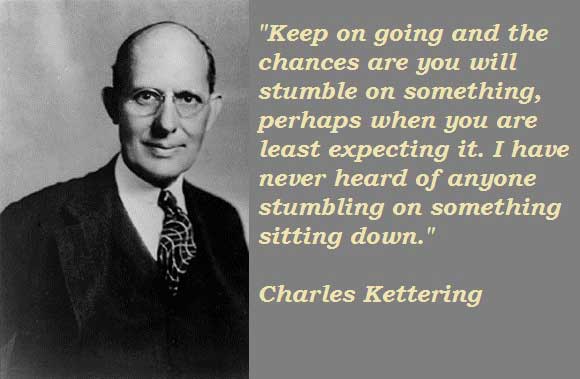
Circumstances have got to be really bad for an individual to not have moments when they can love Life. The “Life” experience has dramatic pluses that everyone is aware of! And for those who are born into living hell, and there are many – well – what is the reaction of those who are more fortunate? What is the meaning of the black situation? How do you handle the spectre? Is it perhaps another Trojan Horse example that we can’t help dragging into our mind?
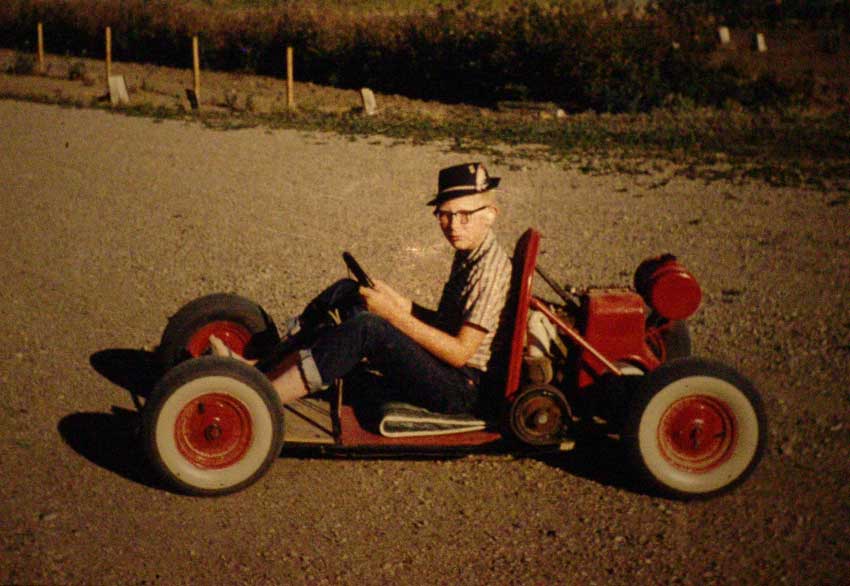
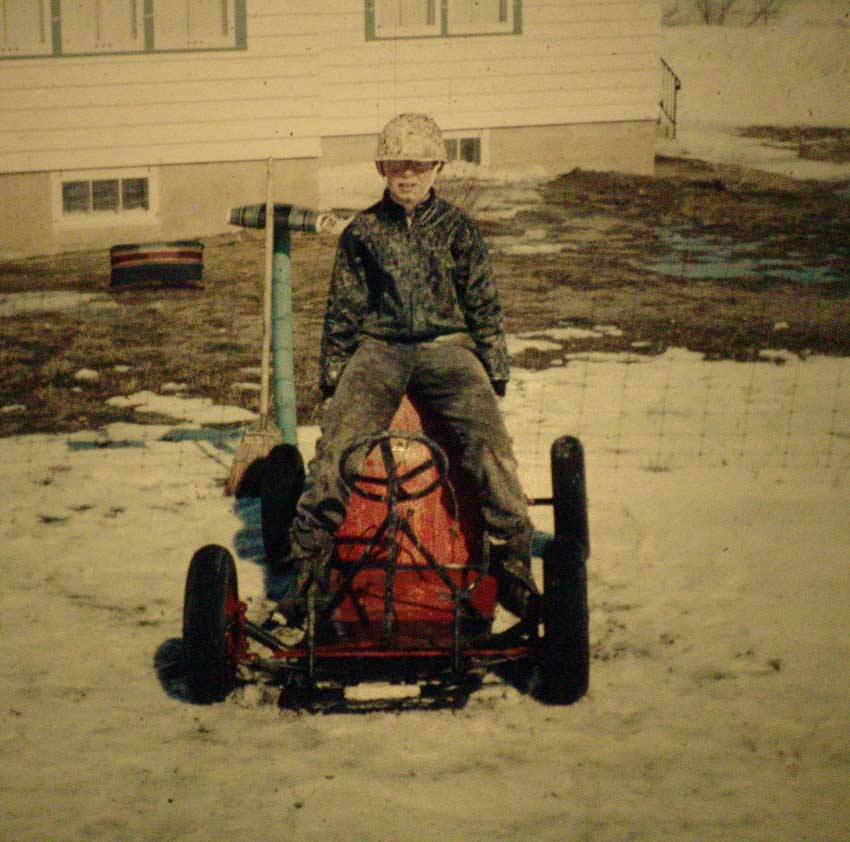
Perhaps my interest in racing cars inspired my father to build me a go-kart. He did not have an elaborate shop and in hindsight, it is impressive that he did such a good job. His tools consisted of a small blacksmith forge, a kerosene powered flame gun, a hand hack saw, a hand crank pole drill that had had an electric motor added, and a simple Forney farm stick welder. He likely had never heard of an angle grinder. MIG welders did not exist, at least for the average farmer. We did not have an oxy/acetylene torch. Plasma cutting was still a dream. Lathes and milling machines and power steel cutting band saws were not part of his world. Even simple tools like a good socket set were scarce in his work shop. The work shop was poorly insulated and had a pathetically small coal / wood heater. The work shop was not a pleasant place to work in winter, which was when he had time to build the go-kart. But somehow he did the job and most of the work occurred without my observation – a pity – he should have pressured me to help. Why didn’t he? What were his mental walls and genetic wiring and historic influences like? How did he influence me? How did I influence him? Really, he should have kicked my ass and forced me to help!
The go-kart had its failings. The belt/clutch was not totally reliable and ate up belts. You had to keep your foot on an engagement pedal to keep the drive belt tight – a less than perfect concept. The rear axle did not have a differential and the attachment of the rear wheels to the live axle was iffy, with shear pins that broke on a regular basis.
But that kart was still a childhood winner. I made a race track around our large farm yard and my friends and I would time each other to see how quickly we could lap. The speeds possible were not life-threatening but the challenge and fun were real. You have seen a picture of the nerdy little kid and the go-kart. That was reality. But inside my mind, shielded by my city wall and my full colour video windows, I was Phil Hill or Wolfgang Von Trips, right out of the pages of Sportscar Graphic, lapping with precision and blistering speed.
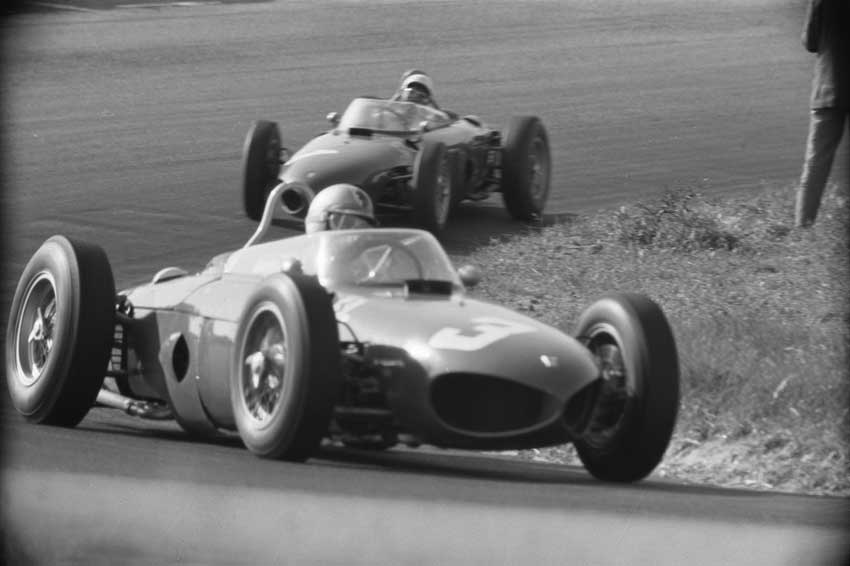
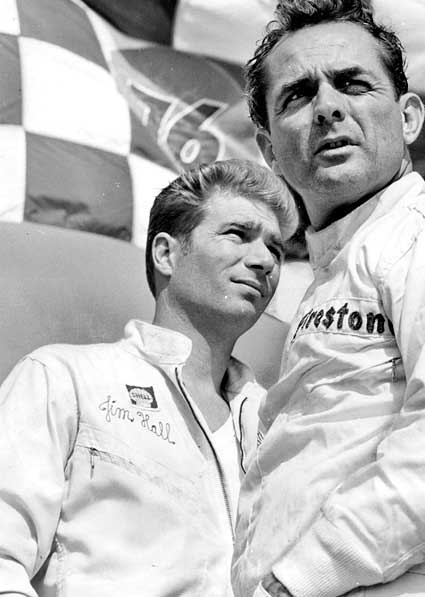
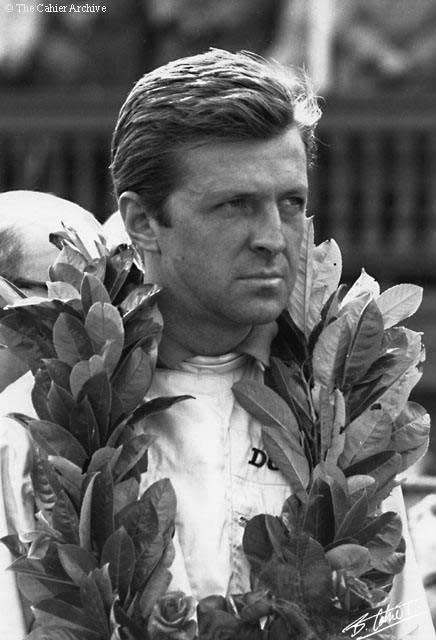
Von Trips leads Phil Hill, both in Team Ferrari Formula 1 cars. This photo was likely taken early in the 1961 season.
Phil Hill and Jim Hall appear in the left photo and Wolfgang Von Trips appears in the right photo. Both shots were likely taken in 1960 or 1961. Hall was only 25 years old and would eventually have a major impact on the racing world. In 1961, Hill would win the Formula 1 Driver's Championship after Von Trips was killed. These guys were childhood heros to little George. Hill did not see himself as a racer and was a mild mannered fellow. Hall was more of a designer than a driver, not that he was a bad driver, but it may be that both men avoided getting killed due to racing because of their mental focus.
The mechanical failures of the kart were a plus because they forced me to think and adapt and learn to repair and dream about design solutions. My father didn’t have time due to working to survive in the farming world, so I could have my comfortable little world, free of distractions! The kart and its failings was like a carrot and stick. In a way it was a Trojan Horse that I had happily dragged it into my world and its troops had been released and they were smashing open my city walls. My video screen was being adjusted to the realities of mechanics and building things and keeping systems running. Good designs do not happen by chance. Planning, smarts, integration of available resources, and WORK, are needed to achieve positive results. Dad isn’t going to pull magic items out of a bag. He had to sweat to make that faulted kart and I had to sweat a little bit if I wanted the beloved machine to keep lapping the track. The realities of drive wheels and differentials and snapped axle pins were truly Realities and not fluffy dreams.
My interest in Formula 1 racing was also a type of Trojan Horse. I excitedly dragged it into my mental city and spent lots of time admiring it. When Wolfgang Von Trips touched wheels with Jimmy Clark, flipped out of control, was killed instantly, and took 15 spectators with him, the event likely changed the video screens of a lot of people. What impact did the event have on me? I didn’t know him. He was a classy picture. He was a neat name. He was a frozen image on pages of a magazine. I wasn’t there. No one I knew knew him. But his death was definitely a slow release type of Trojan Horse. Each time a racing death occurs, I likely think of Wolfgang Von Trips, and ponder the situation. What is the meaning of it all? Where is the wise limit on risk and excitement and challenge and the associated “glory”? I was there when a Triumph Spitfire touched the rear wheel of a Skoda open wheel racer at a race at the Hamlin air base north of North Battleford. I can still see the driver hanging well out of the open Triumph and well above the roll bar as the car spun in the air and then crashed down, upside down. The driver was not killed on the spot, amazingly, and I do not know what his eventual fate was. I know he was badly injured but to this day I do not know more than that. I eventually owned a Triumph Spitfire and may well have driven it more carefully due to having the image of that unfortunate driver burned in my memory. The Triumph was a flimsy car and it reminded me of a noodle that would twist and distort as it went over bumps and around corners.
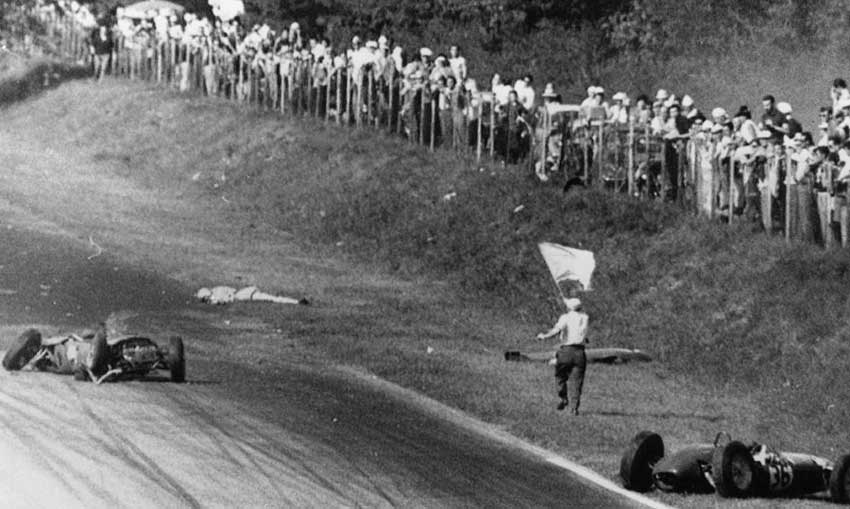
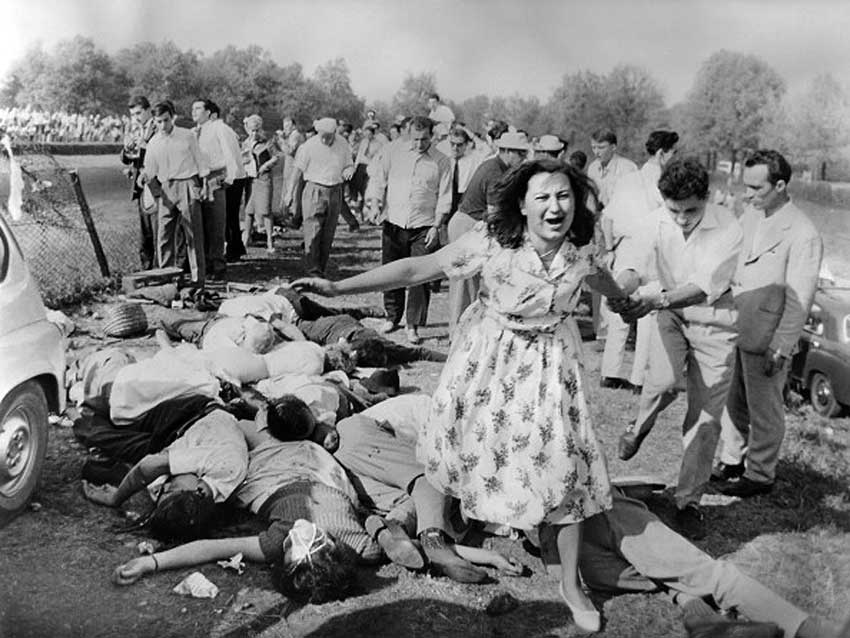
Von Trips lies beside the track after his crash in Italy during the 1961 racing season.
Fourteen spectators died after the Von Trips car tumbled into the viewing area. Not a good day at the races!
I only attended two local sportscar races in my youth. One was at a WWII airbase at Davidson and the other was the race at the Hamlin WWII air base. At the Hamlin event, where the Triumph Spitfire driver was injured, two Canadian heavy weights fought for the 1963 Cdn Driver’s Championship. Dennis Coad in a Lotus 19 beat out Ludwig Heimrath in a Porsche RS61. I was standing near Heimrath’s Porsche when it was being started and had the excitement of seeing one of the open carbs catch fire for an instant prior to the flames being sucked into the engine as it coughed to life. Memorable for a 14 yr old!
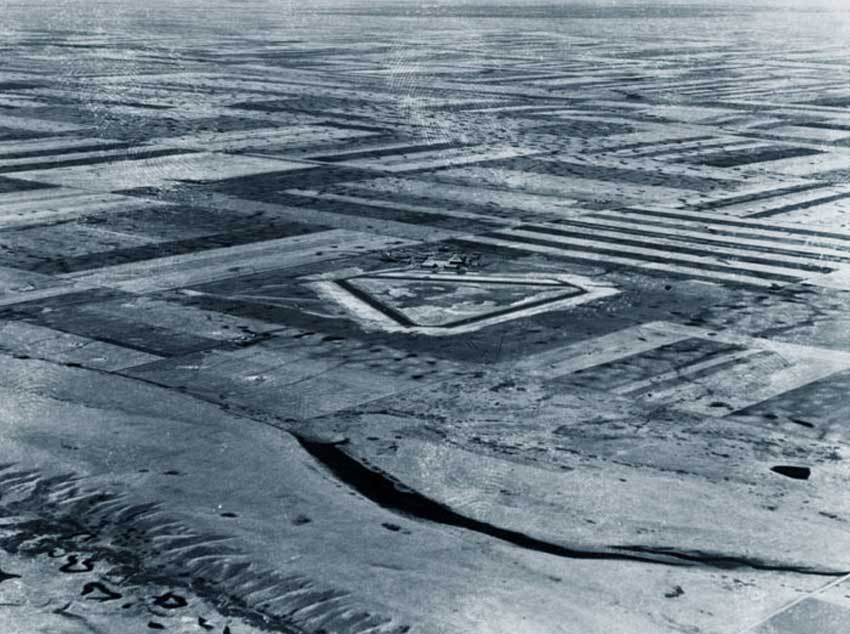
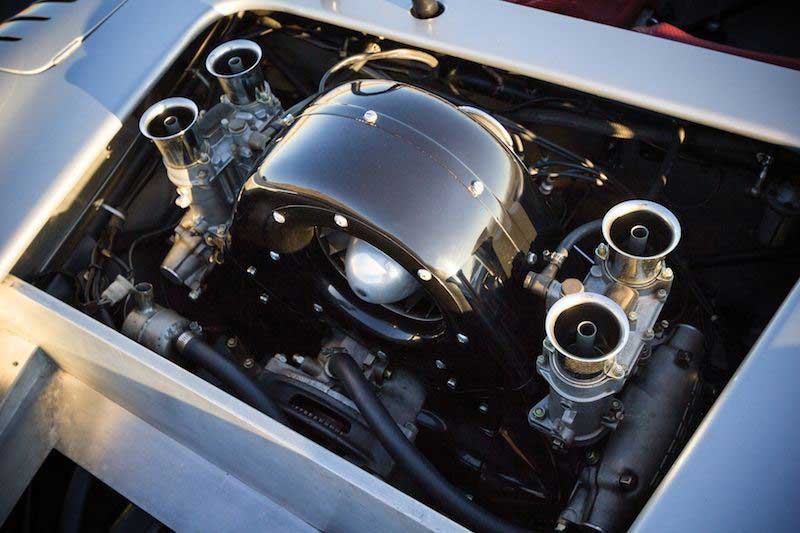
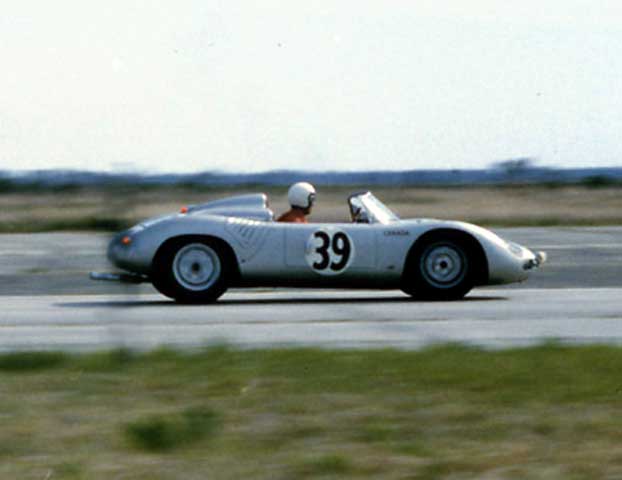
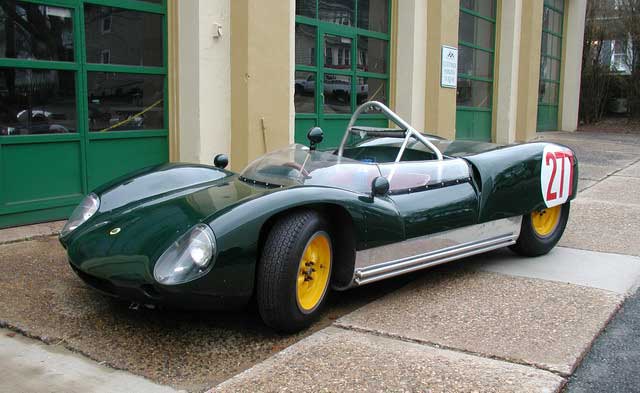
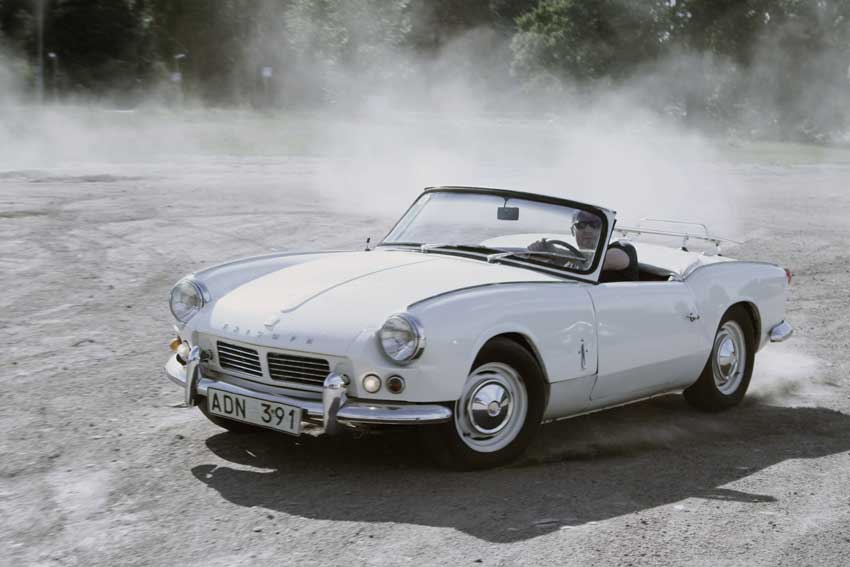
During the Second World War, numerous training bases were constructed in Saskatchewan to train pilots for the war effort. Two of the triangle pattern fields were at Davidson, shown above, and at Hamlin which is north of North Battleford. These bases were the sites for some of my racing memories.
One of my vivid childhood memories was seeing a carburettor fire in Ludwig Heimrath's Porsche RS61 at Hamlin. The engine was being started. It backfired and one carb burst into flame. A second starter spin lit the engine and the flames disappeared into the manifold. Wow! I was pulling for Heimrath but Coad's Lotus took the win.
It is possible that this is the same RS61 and perhaps even the same driver I saw at Hamlin, but if not, it is the same model of car. The shape of the RS61, in my mind, was a classic design. Beautiful!
Dennis Coad drove a Lotus 19 with similar colours at the Hamlin race. He seemed able to cruise to an easy victory.
I owned a Triumph Spitfire, basically identical to this unit. The driver I saw crash at Hamlin was also in a very similar car.
There is no question that the violent death of the romantic Von Trips kicked me a little closer to Reality. Dead men are not doing anything exciting and there is a definite advantage to opting to stay alive. And that is Reality! I have learned a lot of things since 1961 – the year of Von Trips' death when he was 33 years old. He had “excitement” but I have had twice as long at living!
As I think about my life and thoughts as an 11 to 14 year old, I think about how I picked up views on politics and religion and success and girls and work and vocation and death and war and sex and love and honesty and other morals. Why did I have the views I had at 12, and how did my views change and when and why? Thinking about one focus of your life often drags along thoughts of other events that were happening at the same time. How distorted was my video screen? Did the distortion lessen in some areas? Did it worsen in some areas?
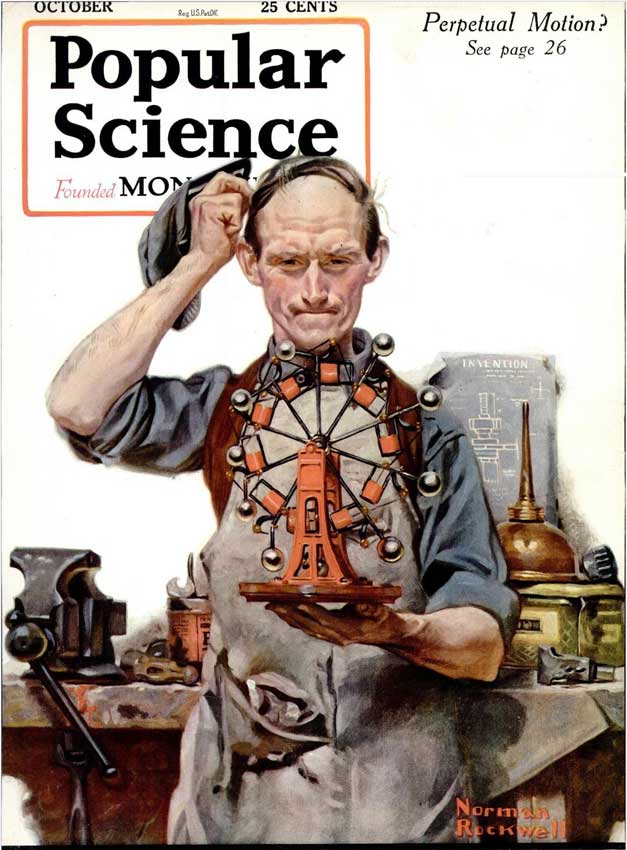
One bozo barricade that I look back on with amusement was an interest I had in exchanging the 4 hp Wisconsin grain loader motor on my go-kart with a perpetual motion machine. I had seen diagrams of a perpetual motion machine and the illusion had fooled me into thinking that the device would really work. I intended to use several of the rotors, placed compactly side by side, to give me the power I felt I needed. What a marvellous power source! I made feeble attempts to build one of the rotors and of course failed. I don’t think I gave much thought as to how I would get it started and stopped! In hind sight, all I can say is, I was a bozo. But when I do a Google search on the topic of Perpetual Motion, it is clear that there have been lots of bozos in past as well as in present to keep me company. Legends of the Johann Bessler Wheel still float around but how many applications of the process do you see? My video screen was distorted but the interest and the project was a wonderful Trojan Horse. I dragged it inside my walls and when the troops streamed out, I not only learned about a reality of physics but I also learned about how illusions work and how the human mind can be fooled by illusions.
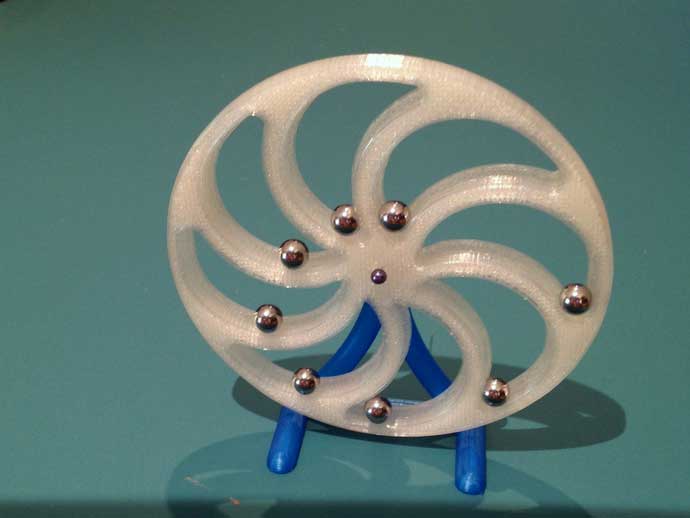
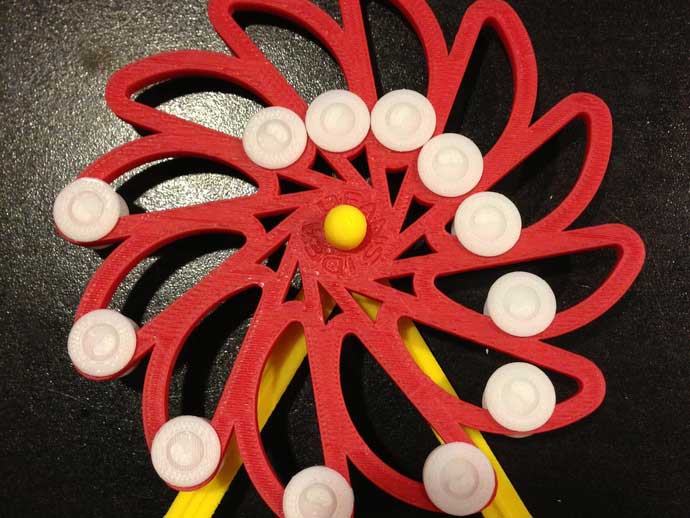
Look at the diagram of the Perpetual Motion Machine. You want to believe it works! You observe the leverage of the balls far from the center pivot clearly being able to lift the balls that are close to the center pivot due to mechanical advantage. Brilliant! Clearly the device has got to work! But you fail to count the number of balls in the high leverage position vs the number being lifted. Oops! Too many up lifters for the number of droppers!
What is “common sense”? It is smarts picked up from day to day events. It doesn’t involve text books or abstract theory or explanation from others. It is the reality that you personally confront on a steady, moment by moment, daily basis. I burned my hand badly on a hot exhaust pipe on a rototiller I was using. Common Sense = your skin has temperature limitations. I wanted to buy a crash helmet but didn’t have the money. Common Sense = you need to have as much income as you have expenses or problems will eventually result. Perhaps not immediately, but for sure, eventually. You have to get up in the morning and WORK if you want to achieve goals and get things done. Common Sense = things don’t happen by chance and without mind power and creative power. Simply living and doing things drums home many realities but our minds are a marvel of visualization, imagination, and also potential bozo glitches. We can be kicked black and blue by common sense events yet we can somehow warp our video windows to show a totally contradictory picture. I, thankfully, learned early that perpetual motion is a type of illusion and that the video screen distortion that I experienced is a constant hazard. Common Sense = human minds are prone to Bozo Barricades or Video Screen Distortions! Maybe that is one of the most valuable lessons a person can learn.
A repeat Charles Ketteringism; It isn’t the things that we don’t know that get us into trouble. It is the things we are certain of that are not so. Kettering had credentials. He was also the driving force behind Freon 12 and Tetraethyl Lead fuel additives. Maybe those projects give him even more credibility for his insight!
My next childhood move was to want something a bit more spectacular than the go-kart and that was a 1951 Hillman Minx car that was sitting in a used car lot in the town I lived near. I believe it cost $75.00 – hard to believe, but that was a long time ago. Now the farm yard race track was even more exciting. The car never was crashed nor rolled, and it provided a lot of exciting pleasure for myself as well as my friends.
Being focused on leverage makes you think the machine will work - but many people, my younger self included, fail to count the number of balls going up vs the number coming down.
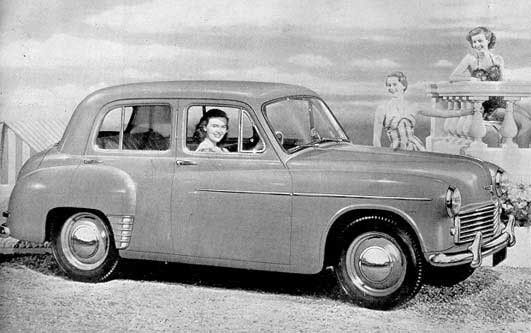
The story continues on Page 5.

